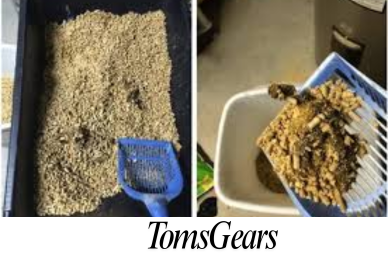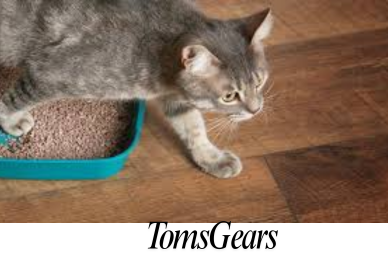How to Cook Salmon for Cats?
Cooking salmon for your cat can be a healthy treat, as long as it’s prepared properly and served in moderation. Salmon is rich in omega-3 fatty acids and high-quality protein, making it a nutritious addition to your cat’s diet. However, it must be cooked without seasoning, oils, or additives to ensure it’s safe for feline consumption.
Why Should You Cook Salmon for Your Cat?
Cooking salmon for your cat offers a range of benefits. Cats are obligate carnivores, meaning they thrive on a diet primarily composed of animal protein. Salmon, with its high levels of protein and healthy fats, can support muscle development, a shiny coat, and overall health. Unlike raw salmon, which can carry harmful bacteria and parasites, cooked salmon is safer and more digestible for your pet.
That said, salmon should only be given as an occasional treat rather than a regular meal. While it’s nutritious, salmon doesn’t provide all the essential nutrients that cats need. For instance, it lacks taurine, an amino acid critical for a cat’s vision and heart health.
What Ingredients Should You Avoid When Preparing Salmon for Cats?
When cooking salmon for cats, it’s important to keep the preparation simple. Avoid using salt, pepper, garlic, onions, or any other seasonings that might seem appetizing to humans but are toxic to cats. Also, steer clear of using butter, oil, or any fatty substances, as these can cause digestive upset and contribute to obesity over time.
The best way to prepare salmon for cats is to bake, steam, or poach it without any additives. This method retains most of the fish’s natural nutrients while ensuring it’s easy for your cat to digest.
What Are the Different Ways to Cook Salmon for Cats?
1. Baking
Baking is one of the healthiest methods to cook salmon for your cat. Preheat your oven to 350°F (175°C) and place a salmon fillet on a baking tray lined with parchment paper. Bake for about 10-15 minutes until the salmon is thoroughly cooked and flakes easily with a fork. Ensure the salmon is fully cooked, as raw or undercooked salmon can carry bacteria like Salmonella and E. coli.
2. Steaming
Steaming is another gentle cooking method that preserves the fish’s nutrients. Place the salmon in a steamer basket over boiling water and cover. Let it steam for 10-12 minutes or until the flesh turns opaque and flaky. Allow the salmon to cool completely before serving it to your cat.
3. Poaching
To poach salmon, fill a pot with enough water to cover the fish and bring it to a gentle simmer. Add the salmon fillet and cook for 10 minutes or until the fish is fully cooked. Make sure there are no bones in the salmon before offering it to your cat, as they pose a choking hazard.
How Much Cooked Salmon Can You Feed Your Cat?
While salmon can be a healthy addition to your cat’s diet, moderation is key. Cats should not consume more than 10% of their daily caloric intake from treats, including cooked salmon. For an average-sized cat, this equates to about 1 ounce (28 grams) of cooked salmon once or twice a week. Overfeeding salmon can lead to nutrient imbalances and even mercury poisoning over time.
| Cat Weight | Maximum Salmon Serving Size | Frequency |
| 5 – 10 lbs (2.3 – 4.5 kg) | 0.5 – 1 oz (14 – 28 grams) | Once a week |
| 10 – 15 lbs (4.5 – 6.8 kg) | 1 – 1.5 oz (28 – 42 grams) | Once or twice a week |
Can Cats Eat Canned Salmon Instead?
While it might be tempting to give your cat canned salmon, it’s not recommended unless the label specifies that it’s safe for pets. Canned salmon often contains added salt, preservatives, or oils that are harmful to cats. The high sodium content can lead to kidney issues, while the added oils and seasonings can cause gastrointestinal upset.
If you must use canned salmon, choose a low-sodium, water-packed variety, and thoroughly rinse it under cold water before serving. However, fresh or frozen salmon that you cook yourself is always the best option for your cat’s health.
Should You Remove the Skin Before Cooking Salmon for Cats?
Salmon skin is not toxic to cats, but it is generally not recommended due to its high fat content. While a small piece of skin might be okay occasionally, too much can cause digestive upset and lead to obesity if given frequently. For a healthier option, remove the skin before cooking and stick to feeding your cat only the lean meat.
Can Cooked Salmon Replace Regular Cat Food?
No, cooked salmon should never replace your cat’s regular diet. While it’s rich in protein and omega-3s, it lacks many of the essential nutrients cats need to stay healthy, such as taurine, vitamins, and minerals. Salmon can only serve as a supplemental treat, not a staple food. To ensure your cat gets all the necessary nutrients, use high-quality cat food as the primary diet and add salmon occasionally for variety.
What Are the Potential Risks of Feeding Salmon to Cats?
Although salmon is healthy in moderation, there are some risks to consider:
- Mercury Poisoning: Salmon, especially wild-caught varieties, can contain mercury, which is harmful in large amounts. Stick to feeding salmon occasionally to minimize the risk.
- Pancreatitis: The high-fat content in salmon can trigger pancreatitis, an inflammation of the pancreas, in some cats, especially if they have a sensitive digestive system.
- Allergies: While uncommon, some cats may be allergic to fish. If you notice symptoms like itching, vomiting, or diarrhea, discontinue feeding salmon and consult your vet.
Summary
Cooking salmon for your cat can be a healthy and enjoyable treat, provided it’s prepared correctly. Always bake, steam, or poach salmon without any seasonings, oils, or additives. Stick to small portions and limit the frequency to avoid health issues. By offering salmon in moderation and ensuring it’s properly cooked, you can give your cat a delicious treat that supports their overall health and well-being.
Frequently Asked Questions
1. Can I feed my cat raw salmon?
No, raw salmon can carry harmful bacteria and parasites. Always cook the salmon thoroughly before serving it to your cat.
2. How do I store cooked salmon for cats?
Store any leftover cooked salmon in an airtight container in the refrigerator and use it within 2-3 days. Do not reheat it more than once.
3. Can I feed my kitten cooked salmon?
Yes, but only in very small amounts as a treat. Make sure it’s boneless and free from any seasonings or oils.
4. What are the signs of a fish allergy in cats?
Common symptoms include itchy skin, hair loss, vomiting, and diarrhea. If you suspect a fish allergy, discontinue feeding salmon and consult your veterinarian.






